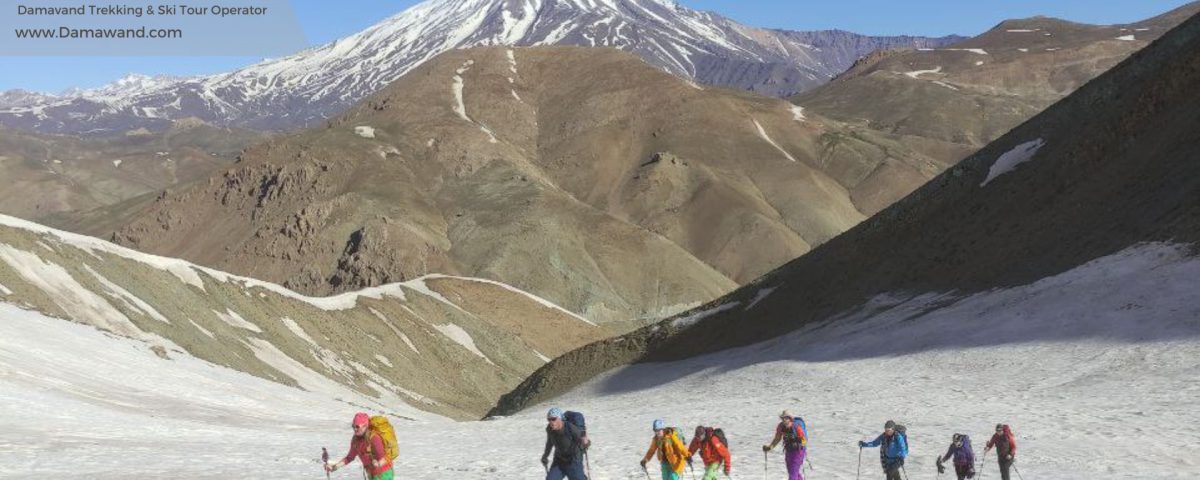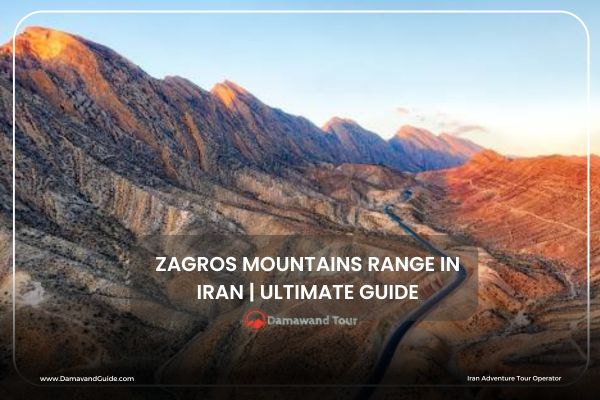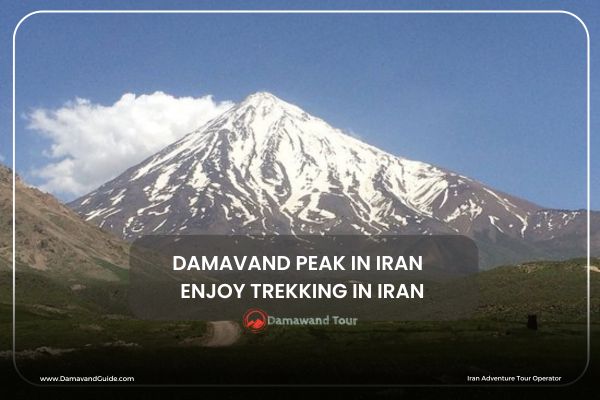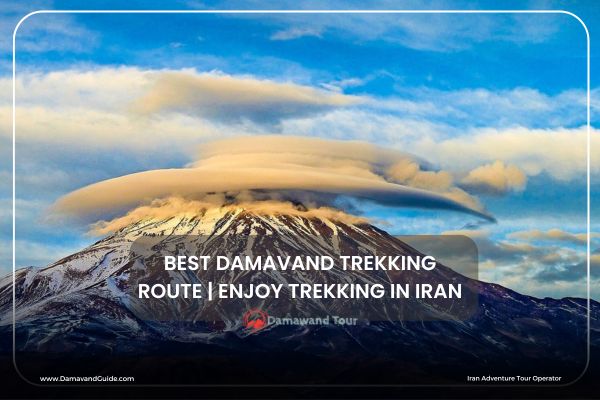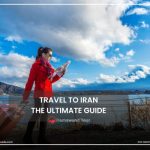
Travel to Iran: The Ultimate Guide (2025)
February 27, 2023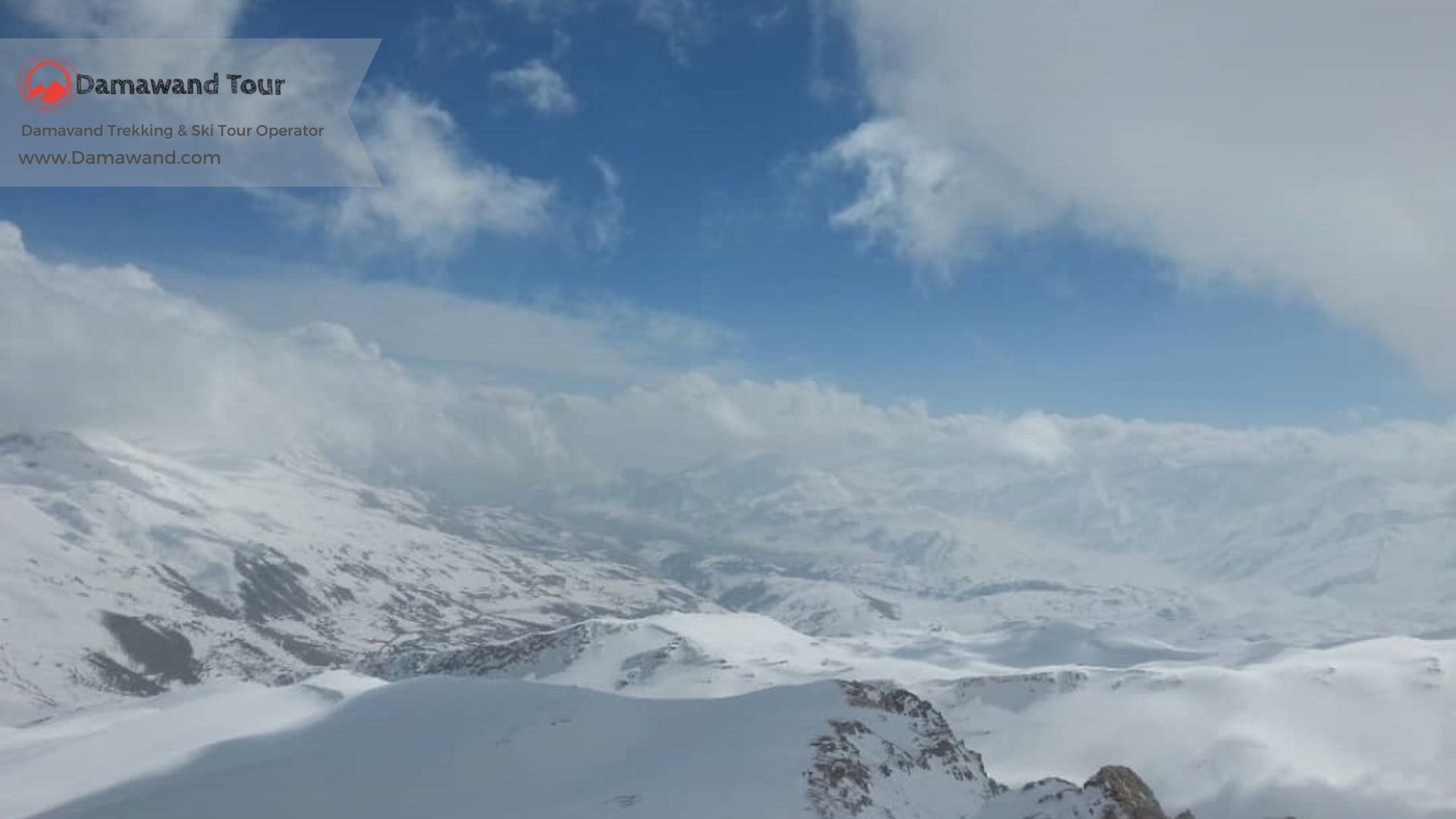
Is Iran Safe to Visit in 2024?
March 15, 2023Top Iran Mountains: Ascent Beautiful Heights
Iran, a country with a rich history, culture, and natural wonders, hosts some of the most spectacular mountains in the world. Iranian mountains, including the famed Iran mountains like Damavand, Alborz, Zagros, and Sabalan, are a combination of natural wonders and cultural treasures.
These majestic peaks in Iran not only offer breathtaking views, but they also provide a unique chance for adventure seekers to challenge themselves and experience an unforgettable journey on the heights of Iran. From the snow-capped heights of Damavand to the rocky terrain of Dena, Iran’s mountains offer something for every level of climber.
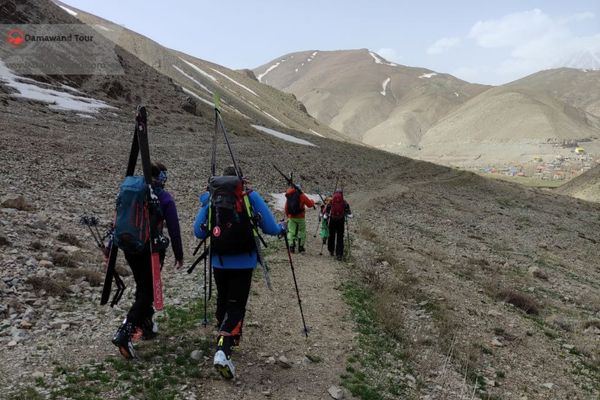
Whether you are an experienced mountaineer looking for a new challenge or a novice adventurer looking to push your limits, Iran’s mountains have something for everyone. With over 50 peaks above 4000 meters, including the highest mountain in Iran, Damavand, Iran offers a plethora of options to choose from.
Here we want to explore some of Iran’s top mountains worth climbing, including their difficulty levels and the highlights of each climb. Discover fascinating Iran mountains facts as we delve into the diverse landscapes and challenges presented by Iran’s highest mountains.
Iran Mountain Facts
Let’s dive into some cool facts about the mountains in Iran! The biggest mountain range in Iran is called the Zagros Mountains. These mountains are like a bunch of big hills all lined up, cutting Iran into two parts from the northwest to the southeast.
Now, these aren’t just regular hills—they’re pretty tall! Imagine mountains reaching more than 3,000 meters, which is like 9,843 feet in the air. That’s super high! And guess what? At least five of these peaks shoot up even higher, going beyond 4,000 meters, which is a whopping 13,123 feet!
So, picture this: a long line of mountains called the Zagros Mountains running through Iran, and on this line, you’ve got these gigantic peaks, some as tall as 13,123 feet! That’s taller than many buildings and definitely way up in the clouds.
These mountains aren’t just sitting there; they’re a big deal for Iran. They make the landscape super interesting and also divide the country into different regions. Imagine having these massive natural barriers that create exciting changes in the land.
Next time you think about Iran, remember these awesome mountains. They’re not just hills; they’re Zagros Mountains, and they make Iran look like a land of giants! And hey, some of these peaks are so high, they’re practically touching the sky. How cool is that?
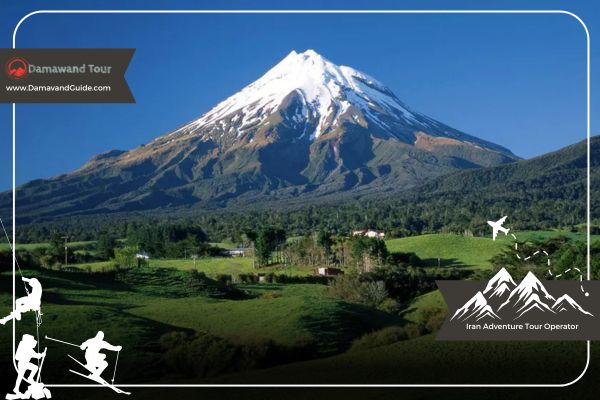
Top Iran Mountains: List of Iran Mountain Ranges
Iran boasts several prominent mountain ranges, each with its unique charm. The Alborz Mountain Range stretches across the northern part of the country, showing the tall beauty of Mount Damavand, Iran’s highest peak. To the west and south, the rugged terrain of the Zagros Mountain Range is fascinating, with deep valleys and great wildlife.
In the heart of Iran lies the Central Iranian Range, contributing to the country’s varied topography.
Running parallel to the Alborz, the Eastern Alborz Range offers panoramic landscapes for hikers and nature lovers. Heading northeast, the Kopet Dag Range influences the climate along Iran’s border with Turkmenistan.
The Lut-Kavir Ranges shape the southeastern deserts, adding to the allure of arid landscapes. Along the northeastern border, the Turkmen-Khorasan Mountains and the Makran Range to the southeast contribute to the country’s extensive mountainous terrain. Each range paints a unique picture, making Iran a haven for outdoor lovers seeking diverse experiences in nature’s embrace.
Here is a list of notable mountain ranges in Iran:
Alborz Mountain Range in Iran:
Stretching along the northern part of the country, the Alborz range is home to Iran’s highest peak, Mount Damavand. This range offers diverse landscapes, from lush greenery to snow-capped peaks. The Alborz range is a 900-kilometer-long mountain range that stretches from the Azerbaijan border in the northwest to the Khorasan region in the northeast.
You can guess how diverse this mountain range can be in different ways. Alborz is home to some of Iran’s most popular peaks, including Damavand and Alam Kuh and a variety of fauna and flora that surprises the mountaineers who choose Alborz for trekking in Iran.
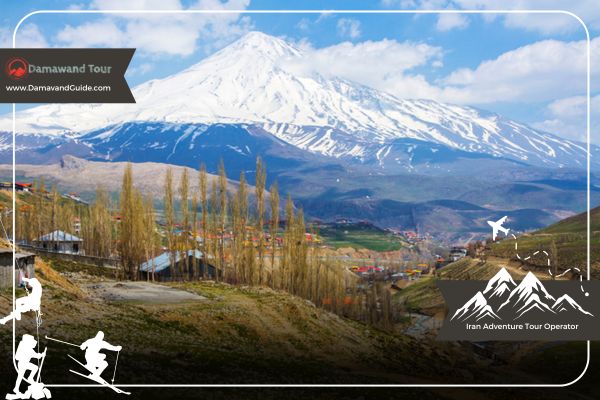
Zagros: Longest Iran Mountain Range
Extending across the western and southern regions of Iran, the Zagros range is known for its rugged terrain, deep valleys, and rich biodiversity. It is a significant geological feature in the country. The Zagros range is a 1500-kilometer-long mountain range that runs along the western and southern parts of Iran. It is a vast and rugged terrain, with peaks ranging from 2000 to over 4000 meters.
Those who pick Zagros mountains have multiple options to experience climbing and skiing on mountains in Iran. Dena, Shirkuh, Zard Kuh, and Oshtoran Kuh are the most popular mountains in Zagros range and you can plan your trip with the help of Iran adventure tour operators to experience a premium version of iran mountains skiing and climbing.
Central Iranian Range
Located in the central part of Iran, this mountain range encompasses various smaller sub-ranges. It contributes to the overall topography and climate of the region.
Eastern Alborz Range
Running parallel to the main Alborz range, the Eastern Alborz features picturesque landscapes and is a destination for hikers and nature enthusiasts.
Kopet Dag Range
Straddling the northeastern border with Turkmenistan, the Kopet Dag range influences the climate of the region and adds to Iran’s diverse geographical features.
Lut-Kavir Ranges
Encompassing the Lut Desert and Kavir Desert, these ranges contribute to the arid landscapes of southeastern Iran. They play a role in shaping the unique desert ecosystems.
Turkmen-Khorasan Mountains
Stretching along the northeastern border with Turkmenistan and into Khorasan Province, these mountains influence the region’s climate and are part of Iran’s extensive mountainous terrain.
Makran Mountain Range
Running along the southeastern border with Pakistan, the Makran range adds to the geographical diversity of Iran, featuring arid landscapes and coastal areas.
These mountain ranges collectively contribute to Iran’s varied topography, offering a range of outdoor activities, from challenging climbs to scenic hikes.
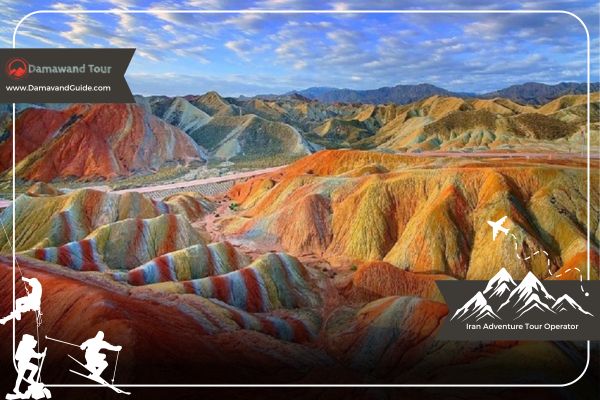
List of Top Mountains in Iran
Iran is a vast country with diverse landscapes, and its mountain ranges, including the prominent Iran mountains, are no exception. Iran has two main mountain ranges: the Alborz and the Zagros. The Alborz mountain range runs along the northern part of the country, while the Zagros range spans across the western and southern regions. Both the Iran mountains, Alborz and Zagros, offer spectacular views, challenging climbs, and unique experiences.
Each year, many climbers, enticed by the allure of Iran’s highest mountain peaks, head to the country to seize this opportunity. It is always a dilemma to choose between the Alborz and Zagros mountain ranges, both of which are featured in the list of top Iran mountains. Two of the best Iran mountains are upon you! Which one do you choose?
Mount Damavand, the highest mountain in Iran
Mount Damavand, located in the heart of the Alborz mountain range, is the highest mountain in Iran and the Middle East. Mount Damavand stands at 5671 meters; even looking at it from a distance makes you hold your breath. This majestic volcano is a popular destination for climbers from all over the world, offering a fantastic climb with breathtaking views of the surrounding landscape and an excellent destination for skiers who like to go on a mount Damavand ski tour.
The climb is considered moderately difficult, and it can take anywhere from two to three days to complete, depending on the route chosen. You may prefer joining a mount Damavand climbing tour; it is a wise decision to make as you can easily find the best tour operators who can help you for your epic journey.
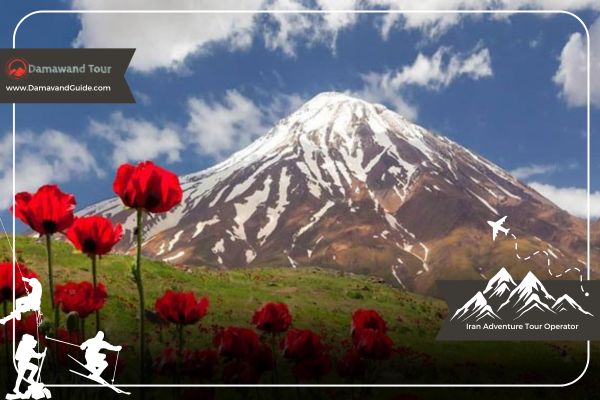
Alam Kuh (Alam Kooh): The second_highest mountain in Iran
Alam Kuh (Alam Kooh), also located in the Alborz range, is the second-highest peak in Iran, with an elevation of 4850 meters. It is known for its steep and challenging climbs, with routes that require technical skills and experience. Climbing Alam Kuh is not for the faint of heart, but for those who dare to take on the challenge, the rewards are breathtaking views and a sense of achievement.
Every climber who has been there can tell you stories about the wall routes and the challenges up on the peak. Mount Alam Kuh is known for its stunning landscapes and challenging rock walls. It is a popular destination for mountaineers and nature enthusiasts and if you want to have an adventure Iran trekking tour in Iran, it is highly recommended.
Mount Sabalan: A Snowy Peak among Iran Mountains
This dormant volcano, located in the Alborz range, is known for its diverse ecosystems and a stunning crater lake at its summit. In the northwest of Iran stands the epic peak of Sabalan, which is also known as Savalan in Turkish. This towering giant is a composite volcano and the third highest Iran mountain, surpassed only by Damavand and Alamkuh. At an elevation of 4811 meters, it challenges climbers to scale its snowy peak and rewards them with awe-inspiring views of the surrounding landscape.
As you go on a trekking adventure to the top, the vastness of Sabalan unveils itself with every step. This snowy Iran mountain is revered among the locals, with many believing that it is the birthplace of the prophet Zoroaster. Legends aside, Sabalan is a place of unmatched beauty, with a magnificent lake formed on its peak and hot springs bubbling in the foothills.
Every year there are several Iran climbing tours arranged for this beautiful mountain. The region surrounding Sabalan is a haven for vegetation and wild plants, making it a thriving center for beekeeping and growing herbs. The sheer diversity of the landscape is sure to captivate your senses, and the memories of your trek will stay with you forever.
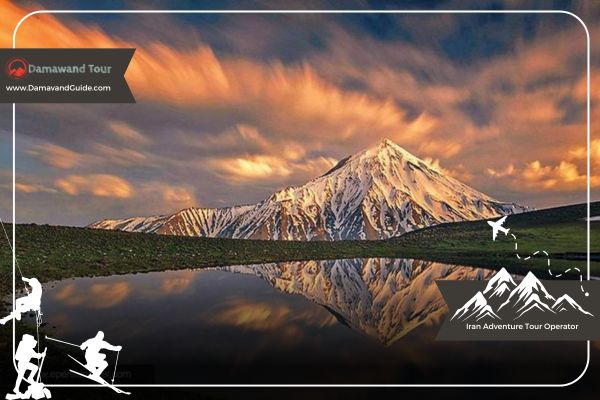
Mount Tochal, Nearest Mountain to Tehran:
Just outside Tehran, Mount Tochal is a popular destination for both hikers and skiers, providing a convenient escape into nature.
Mount Tochal is a special mountain near Tehran, the capital of Iran. It’s not just any mountain; it’s a mountain that loves to have fun with everyone who visits. Imagine a giant’s playground full of excitement!
One of the fantastic things about Mount Tochal is that it’s super close to Tehran. You can almost wave hello to the city from the mountain. So, if you’re in Tehran and want a quick escape to nature, Mount Tochal is your go-to friend. Now, what can you do on this friendly mountain? Well, a lot! If you’re feeling adventurous, you can go hiking. It’s like a nature treasure hunt, finding cool rocks and maybe even spotting some colorful flowers.
But wait, there’s more! Mount Tochal loves winter too. When the snow covers the mountain like a cozy blanket, it’s time for skiing in Iran and snowboarding. Imagine sliding down the mountain with the snow whooshing around you – so much fun! But what if you’re not a fan of snow or hiking? No worries! Mount Tochal has something for everyone. You can hop on a big, comfy gondola, like a magical flying carpet, and enjoy the stunning views as you go up the mountain. It’s like a ride in the sky!
At the top of Mount Tochal, there’s a tower where you can see the city below and the mountains stretching far and wide. It’s like being on top of the world, and the view is simply breathtaking.
So, Mount Tochal is not just a mountain; it’s a place of joy and adventure, where nature and fun come together. If you ever visit Tehran, don’t forget to say hello to Mount Tochal
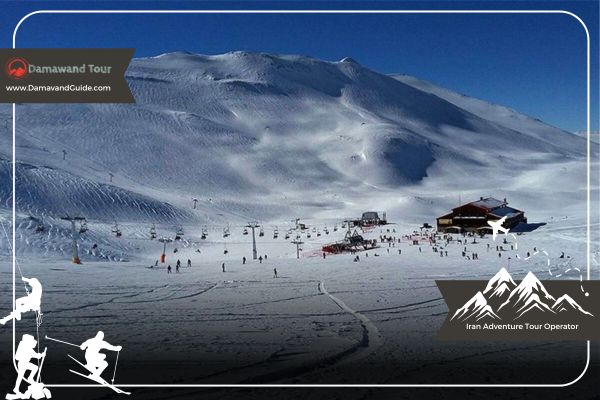
Mount Dena: Highest Zagros Range, a mighty Iran Mountain
Nestled within the sprawling Zagros Range lies a natural wonder that is sure to take your breath away – Mount Dena. This mountain boasts a mighty peak, standing tall at an altitude of 4,448 meters (14,593 ft), and is known as the highest point of the Zagros Range. It is a magnet for thrill-seekers, attracting climbers and skiers alike to explore its wild terrain from February to April.
Ascending Mount Dena is no easy feat, but the rewards of the climb are unmatched. Along the way, you’ll discover spectacular ice caves, springs, and floating streams that make you feel as though you’re walking through a dream. The journey to the summit is adorned with breathtaking scenery, with rare and unusual vegetation weaving a vibrant tapestry around you. Keep your eyes peeled, and you may even catch a glimpse of elusive creatures like brown bears, eagles, or wild cats that call the mountain home.
But the real icing on the cake is the people. The hospitable Bakhtiari nomads who live along the foothills of Dena will welcome you with open arms and a hot cup of tea. They know this mountain like the back of their hand and deeply connect with its secrets and mysteries. Listen to their stories and let them guide you through their world.
Shirkuh, the Lion of Iran Mountains
Shirkooh reigns supreme as the highest peak in Central Iran, rising majestically in the heart of the Yazd Province desert. This mountain, whose name is derived from the Persian words for “lion” and “milk,” is a sight to behold. It’s said that the mountain resembles a lying lion with a milky-white coat, and it’s not hard to see why.
Shirkooh is a unique mountain that offers a rare blend of desert trekking and peak climbing. Its summit stands at an elevation of 4075 meters, making it a relatively easy climb that can be completed within 24 hours. After a few hours of trekking, the landscape transforms into a pristine desert that stretches out before you, offering panoramic views that are simply breathtaking.
The rugged terrain and steep ascents of Shirkooh may not make it the most challenging climb in the Zagros Range, but it still poses a thrilling adventure for experienced mountaineers. The mountain’s snow-capped peaks during the winter season make for a mesmerizing sight, and you’ll be rewarded with a once-in-a-lifetime experience that is hard to match.
So pack your bags, grab your trekking poles, and make your way to Shirkooh, an unforgettable mount climbing experience in Iran is waiting for you. It’s a journey that will leave you feeling alive and reinvigorated.
Other Iran Mountains
Mount Taftan: An impressive stratovolcano in southeastern Iran, Mount Taftan’s unique geological features attract both adventurers and geologists.
Mount Shah Alborz: Part of the Alborz mountain range, Mount Shah Alborz offers stunning alpine landscapes and is a favorite among trekkers.
Mount Bakhtiari: This mountain in the Zagros range is known for its challenging trails and is a favorite among experienced hikers seeking an adrenaline rush.
Mount Khersan: Nestled in the Zagros mountains, Mount Khersan is known for its picturesque valleys and diverse plant life, creating a captivating natural setting.
Mount Sialan: A part of the Alborz range, Mount Sialan is famous for its scenic beauty and is a popular destination for those seeking a rewarding trekking experience.
Iran mountains climate
Iran, a big country in western Asia, has lots of different weather in different places. The climate changes depending on where you are.
On the coast of the Caspian Sea, the weather is mild, which means it’s not too hot or too cold, and it gets quite a bit of rain. In the plateau, which is like a big flat area, the weather is continental and arid. “Continental” means it has hot summers and cold winters, and “arid” means it doesn’t get much rain. In the high mountains, it’s cold, and there are deserts with hot weather on the southern coast and in the southeast.
Generally, Iran is a dry country, which means it doesn’t get a lot of rain. But, in the west and the north, there’s a bit more rain than in the east and the south. The only place that gets a good amount of rain is the Caspian Sea coast.
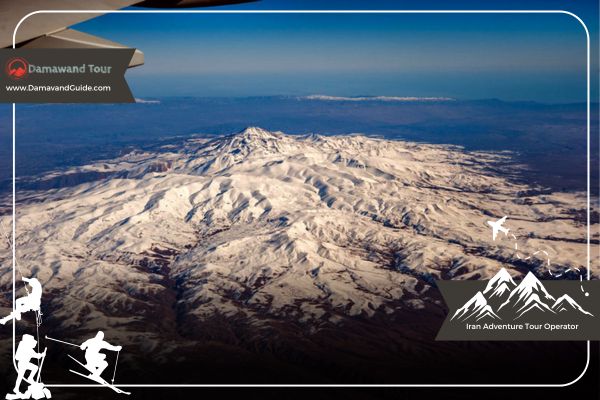
When it’s summer in Iran, it’s usually sunny almost everywhere, except on the shores of the Caspian Sea. Summer is the time when the weather is warm and the sun shines a lot. So, if you’re planning to visit Iran in the summer, you can expect bright and sunny days, especially in most parts of the country.
So, Iran has different climates in different places – some are mild and wet, some are hot and dry, and some are cold and snowy. It’s like a weather adventure depending on where you go!
Iran mountains climate in Spring: In spring, Iran’s mountains wake up with a pleasant climate. The temperatures become warmer, and the snow starts melting, revealing beautiful landscapes. Spring brings a mix of sunshine and gentle breezes to the mountainous regions, making it an ideal time to explore. You can expect temperatures to be mild, creating a comfortable atmosphere for outdoor activities. Flowers bloom, and the scenery turns vibrant, inviting adventurers to enjoy the refreshing mountain air. It’s a fantastic season to experience the beauty of Iran’s mountains, with nature coming to life after the winter slumber.
Iran mountains climate in summer: In the summer, Iran’s mountains have a pleasant climate. The weather is usually warm, and the temperatures can vary depending on the specific mountain region. Some mountains may have cool breezes, making the summer enjoyable for outdoor activities. In general, you can expect the temperatures to be comfortable, making it a great time to explore the beauty of Iran’s mountainous landscapes. Whether you’re hiking, trekking, or simply enjoying the views, the summer climate in Iran’s mountains offers a delightful experience for everyone.
Iran mountains climate in Autumn: In Iran, when it’s autumn, the mountains have a pleasant climate. The temperature is not too hot or too cold; it’s just right. The air is fresh, and you can see colorful leaves on the trees. The days are comfortable for exploring, and the nights are cool but not freezing. It’s a lovely time to visit the mountains in Iran because you can enjoy nature without dealing with extreme temperatures. So, if you like mild weather and the beauty of fall, Iran’s mountains in autumn are the perfect place for you!
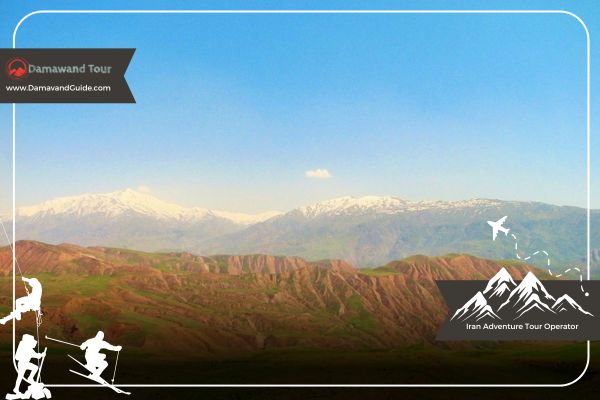
Iran mountains climate in winter: In the winter, Iran’s mountains get chilly and snowy. The weather can be quite cold, and the mountains wear a beautiful white blanket of snow. People who love winter sports like skiing find this time perfect. The temperature in the mountains drops, sometimes below freezing, but it makes the landscape look magical. So, if you’re planning to visit Iran’s mountains in winter, make sure to bundle up and enjoy the snowy wonderland!
Iran Mountains FAQ
- Famous ranges: Alborz (highest peak: Damavand), Zagros, Kopet Dag.
- Highest peak: Mount Damavand (5,610 meters, volcano)
- Hiking: Yes! Various difficulty levels, try Alborz or Alamut Valley.
- Safety: Generally safe, use a guide, prepare for weather, share plans.
- Permits: Sometimes needed, like for Damavand (guides handle).
- Best time: Spring (April-June) or fall (September-October).
Last Words
Travel to Iran offers a wide range of outdoor activities for adventure lovers. One of the most popular experiences is following Iran trekking routes, especially for those interested in hiking and mountaineering. For serious climbers, the Mount Damavand Climbing Guide provides essential tips to conquer Iran’s highest peak, standing at 5,610 meters. In winter, Damavand ski touring becomes a sought-after activity, drawing skiing enthusiasts to its snow-covered slopes.
Iran’s diverse landscapes also feature deserts, forests, and national parks, where travelers can explore unique ecosystems. Whether it’s mountaineering, skiing, or simply enjoying a walk through nature, outdoor activities in Iran offer something for everyone. Local guides and tour operators ensure safety and make sure visitors fully enjoy their adventures. With so many natural wonders to explore, Iran is a must-visit destination for those seeking unforgettable outdoor experiences.
All Iran mountains hold secrets waiting to be uncovered, and the best way to unlock them is through the right paths and routes. It’s never worth the risk to try a sudden ascent without proper gear. Also, having knowledge of the terrain is essential for a successful climb. But fear not, as local guides and tour operators are available to help you along the way. So, set your sights high, embrace the adventure, and remember to prioritize safety and health every step of the way!

